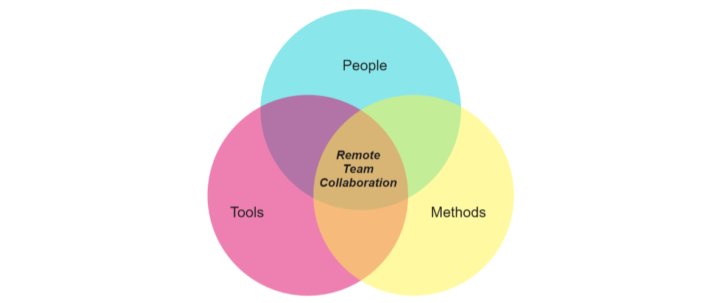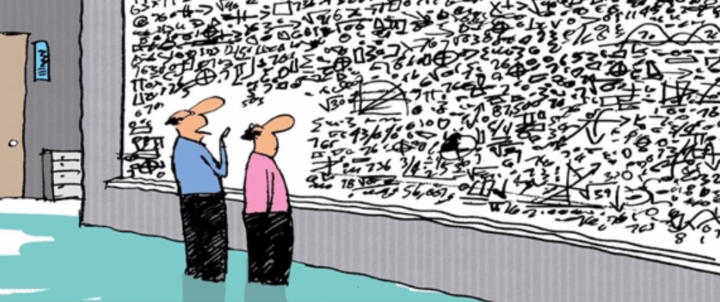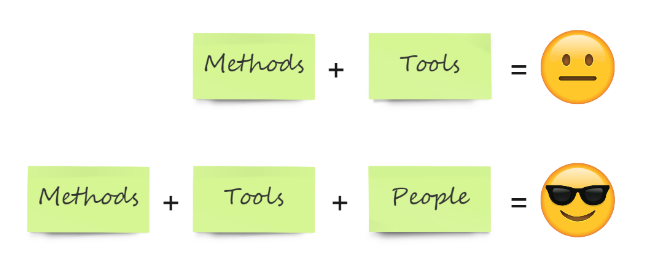Contents
Remote work is getting more & more popular nowadays. It’s understandable: With the right tools in your hand, distance is not a burden anymore. Think of it for a minute: you can work with the best professionals no matter where they are! Even from the other side of the world. Yet, many Product owners, scrum masters, team leaders & members know that one of the weakest points of remote work is collaboration. Thus we'd like to offer you 5 practical ways how to solve remote work collaboration issues.
Collaboration & communication can be an issue both for co-located teams and for remote teams too. The only difference is that in a remote team physical distance strengthens this problem.
Luckily every problem has a solution. There are plenty of tools & techniques which will help your remote team work together. Before we dig into that, let’s check the basic components of a remote team’s collaboration:
3 components of remote work collaboration

These are the building blocks of your team. Working on each of them is essential for good collaboration. Look at it like this: No matter how good methods (agile) and good people (productive, smart people) you have…If you don’t have the right tools, those good methods, and smart people cannot connect together. (You cannot have a retrospective with your remote team if skype breaks down, and you cannot talk, right? )
Let’s have an overview of 5 methods & tools that we use at UX studio to have a successful collaboration with our (remote) clients.
5 solutions for remote work
1. Make a friendly & open atmosphere

- What happens in a co-located team:
It’s easy to talk with your employees, teammates, or just listen to them talking. Therefore you’ll get to know & trust the other person relatively faster than in a remote team.
- Remote work challenge:
This “trust in each other” story gets longer, due to the lack of face-to-face communication.
- Solution: Show your personal side
Chat can help you kill impersonal atmosphere, and helps you build trust.
It’s an informal way of communication. It’ll help you show yourself, and bring the team members closer to each other.
You cannot go out for a coffee break with your colleagues. But, you can definitely make a fun channel on slack, where you can post, and share your experiences & funny stories. Encourage them to try out new things & share their fails by making a public failures channel. So that they can share their failure in a new method, tool or whatever. Make a channel where every team member must rate their mood every morning. There are tons of other ways how you can make a personal atmosphere.
Be a leader in this! Show them how it must be done by being the first one who’s post in this channels.
2. Make the process easy-to-follow & transparent

- In a co-located team:
As a PO/Manager, if you’re next to your employees, you can (hopefully) see and hear what’s going on in your team.
- Remote work challenge:
Without a really good, and managed task board, it’s impossible to follow where you are in the process and manage your team.
- Solution:
In a remote team, using free project management software, like taskboards, is even more important. Report and manage the tasks that must be done! Make it visible for everyone, so that each team member will know what others are working on. When POs take care of these task boards, everything goes according to plan.
Though you cannot overhear what your colleague is working on right now, you can see his or her task in the Jira any time.
3. Hunt down productivity killers in advance

- What happens in a co-located team:
When you meet your employees, teammates everyday face-to-face, there is a high chance that you’ll see the problems before mentioning. If there is a tension between the team you’ll notice this by the facial reactions, quirks. You don’t have to be a therapist for seeing that, but you definitely need to be a PO/ team leader who takes care of his team. For releasing these tensions one-on-one discussions, team discussion,& team buildings can be real cures.
- Remote work challenge:
When you’re away from your team, it’s tempting to only focus on the ToDos, process, and productivity. However, if you only focus on these, you’ll miss the forecast of future problems, barriers. It’s very, very risky not to focus on this issue.
- Solution: Take care of face-to-face discussion!
Real-time, face to face discussions is essential for you to build trust with each team members & with the team as a whole.
You can manage one-on-one discussions, feedback rounds, retrospectives, and team buildings by video call. Timing is important! For example, make sure to have one-on-one discussions every week (if possible).
Although it requires a lot of preparation and organizing. But it will pay you off in the long term.
- Tools: gotomeeting, skype, hangouts, appear.in
4. Think together

- What happens in a co-located team:
Why do you want to have smart people to your team? To put your smart heads together and make an awesome project/product, right?
For this, you have to think together, and you have to visualize your thoughts so that you know you are on the same page by one word.
On a brainstorming session, you have a variety of tools to visualize your thoughts and express your point of view. Whether on a whiteboard or by the help of hundreds of post-its, there are plenty of opportunities to show your perspective to your teammates.
- Remote work challenge:
Without visualizing your thoughts in real-time, it can be a real challenge for your mates to understand what are you talking about. It slows down the whole process of collaboration.
- Solution: Prepare your online whiteboard!
There are many real-time whiteboards, what you can use for remote brainstorming, sketching session. And you should definitely use them! However, tools are not enough in itself without preparation.
At UX studio we overcome this problem by preparing a lot for these remote brainstormings. We plan the whole structure of the session prior to the call. There is always a responsible facilitator of each UX workshop. During the session, the facilitator has two main tasks to do. One task is to make sure everyone has a word. The other is to clarify & summarize the results.
- Tools: Realtimeboard (this is our favorite tool in UX studio), Awwapp
5. Share the vision & work together on future plans

- What happens in a co-located team:
You share the vision of the project/product with the whole team. You can use written online stored documents. Or you can put out printed materials on the walls, to visualize and share the processes, ideas, methods, goals with your team.
- Remote work challenge:
The lack of shared location means that you cannot hang out hang out anything on the wall to show your plans, processes, etc.
- Solution: Share everything & ask others to collaborate!
Store everything in 1 place, where you can invite others to edit, or share the team’s material. Keep the folders & files up-to-date. Call others to collaborate, and update others if a shared file content has been changed.
- Tools: Google products: Sheets, Docs, Gmail, Slides, Other: Dropbox, Youtube

It’s just the beginning
So, we talked about Tools & Methods that you can use for successful remote work collaboration. These are just 2 components of good remote teamwork. These are essential for remote work collaboration. But the third component is the most important one: People.
Searching for the right UX agency?
UX studio has successfully worked with over 250 companies worldwide.
Is there anything we can do for you at this moment? Get in touch with us and let’s discuss your current challenges.
Our experts would be happy to assist with the UX strategy, product and user research, UX/UI design.




